Firstly, what is the VJD method? Why are you seeing it in Indian domestic cricket matches? Why are you seeing it in the Maharaja Trophy? Why is DLS method not being used for rain interrupted matches in these cases?
A lot of relevant questions and something I’ll break down for you through the course of this article. Put simply, the VJD method is a mathematical model.
One that is used in rain affected cricket matches, exactly like the DLS method, in order to arrive at a sensible target score for the second team to chase.
Now of course, we can get into the mathematics of it all but that won’t be something new you take away from this read. I’m in a bit of a mood to highlight the journey of V Jayadevan, the creator of the method. And how he’s doing his best to bring this method to the ICC’s notice.
We also interviewed him on our podcast so it’s only fair that we do justice to his story. Hopefully, we bring out material relevant enough for you to appreciate his passion and work!
For those who are not avid readers or just feeling lazy, you can watch our podcast on Youtube too!
Inception of VJD
Now to set a little bit of context, Mr. Jayadevan fell in love with the game in 1974/75. A touring West Indies side defeated India 3-2 in what was an iconic test series.
Jayadevan fondly talks about his memories of a young Viv Richards on debut, listening to commentary over radio and the thrill of following the series that after 4 test matches was even on 2-2.
You could see the twinkle in his eye when he spoke about this memory of his and how it greatly influenced his taking up of the game. He represented his school, college and even TERI! An engineer and post graduate from IIT Madras, Jayadevan in his own right is a bright mind. One with a great passion for cricket.
Of course, getting into cricket that early on also meant that Jayadevan had witnessed the infamous 1992 rain affected World Cup match. South Africa were given an impossible 22 runs to score in just 1 ball.

The aftermath? This definitely shook Jayadevan, much like it did the rest of the cricketing fraternity. There was a sense of wanting to make some sort of change and contribute to the game such that no event of this level of stupidity ever took place again!
It was only in 1998 though, that Jayadevan started acting on this idea seriously. One of the earliest renditions of the VJD method, was in fact put into motion when Jayadevan was teaching his subordinate how to code in FORTRAN and needed a problem to solve!
Learning about DLS, Initial Fame & More!
It was also around this time that the ICC had introduced the famed Duckworth-Lewis (DL) method. This was used in international cricket for all rain affected games of cricket.
The initial results were good. The DL method was seen to be an elegant solution, some reports did claim that it had glaring inconsistencies. Something that Jayadevan noticed too for certain scenarios, eventually leading to him pursuing his own method more seriously!
Readers may also like: How Dhoni’s batting struggles ended his career
Jayadevan even wrote to BCCI & Sunil Gavaskar around 2000, after which he did receive a call from them to present the method. This was not all, Duckworth & Lewis also heard about the method. Add to that, Srinivas Bhogle published an article on the VJD method and how it was slightly better than the DL method.
A snippet of the article that Mr. Bhogle wrote
You can find this article here.
This shot the VJD method into a fair amount of limelight with Jayadevan also going to the annual umpire’s conventions to present his work. The method was seen as an able competitor to the DL method. Some perhaps, even considered it to be much more consistent.
It also meant that Jayadevan also made efforts to push this method to the ICC. However, this is where things took a bit of an interesting turn.
VJD’s Rejection by ICC & BCCI
Cut to about 2005-06, when the ICC was accepting applications for a new method for rain affected games, Jayadevan did submit his work to the ICC.
However, his work had to undergo an additional layer of checks. The ICC’s reasoning for this was that there were too many methods for presentations. Hence, they wanted to filter out some methods initially.
The person in charge of this examination was a certain David Kendix who in the words of Jayadevan, had made in his report a lot of factual mistakes about the VJD method.
And when Jayadevan appealed to the ICC, citing these mistakes, all he was met with was the ICC asking him to try again in the next cycle as they had decided to go ahead with the DL method!
Not only this, but even in the BCCI, while Sunil Gavaskar was all for the VJD method, a certain set of people were of the opinion that India would be better off using the DL method for domestic games. Their reasoning was that the 2007 World Cup was going to feature it.
Ironically enough, India crashed out in the group stage of that 2007 World Cup. Post this, the VJD method was reinstated. Sunil Gavaskar directed for the rule to be incorporated in all domestic cricket in India!
VJD at IPL?
From then on, the VJD method has been a constant feature in all the domestic tournaments in India.
It is also currently being used in prestigious T20 tournaments around India like the Maharaja Trophy of Karnataka!

In 2010, Sunil Gavaskar had even recommended the VJD method to the IPL committee and it was almost confirmed that it would be used.
However, they pulled away from it last minute. They cited an absolutely idiotic reason of how the league had international players and so the VJD method should not be used!
Ever since then, it has been an almost futile effort from Jayadevan’s end to bring the VJD method into the IPL or to the ICC’s notice.
Closing Remarks
Despite all of this, Mr. Jayadevan continues to make improvements to his existing method and has also come up with new models for different aspects of the game.
He is an extremely passionate individual and with him now being retired, he is devoting more time than ever before to this game he loves.
What we can do as avid cricket fans of the game is to put out his story and share it. Share it as much as possible to give him mainstream media attention. This is the only way to push this method into the IPL and eventually the ICC.

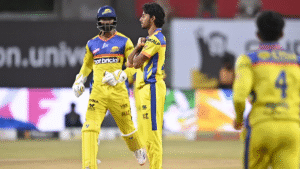
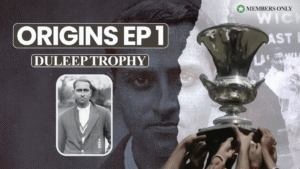


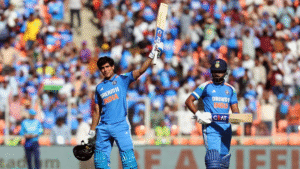
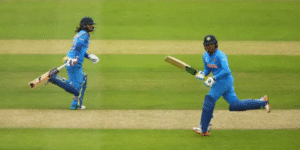
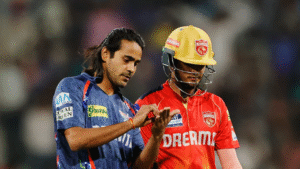

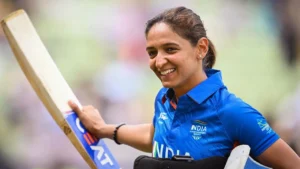

Nice interview. There is yet another alternative, specifically designed for T20 games (even possibly The Hundred), that is simple and easy to use. It requires only back-of-envelope calculations with a simple calculator, but more accessible and easier would be a spreadsheet version. The same can be used, completely for free and was featured on ESPNCricinfo about 7 years back, and is based on the work detailed in https://www.espncricinfo.com/story/a-biology-inspired-rain-rule-for-t20s-917955. The spreadsheet can be downloaded from https://www.espncricinfo.com/ci/content/download/919069.html. It pretty much works as good as DLS/VJD and sometimes better (difficult to argue which is more correct) – and has in its core a well-known biology model adapted to the game of cricket :). I hope you find it interesting and I will be happy to provide more details if you like to know more.
Hi Ganesh! Thanks and glad you like the interview. Thank you also for sharing this method, will definitely check it out 🙂 We’d definitely love to know more! Where can we contact you?
Hello Praatibh. Sorry that I saw you reply very late. You may please feel free to write to me on ganesh.cfd@gmail.com and I would be happy to discuss.
Pingback: The Curious Case of KL Rahul - Cricket By JB
Pingback: NRRR Cricket: Net Relative Run Rate vs NRR Explained